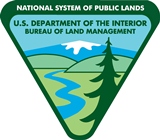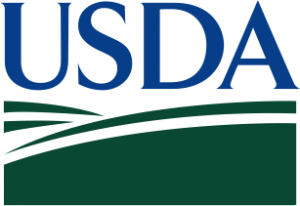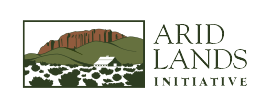
Partners
The Arid Lands Initiative is composed of multiple private and public entities in eastern Washington who benefit from coordinating ongoing actions with each other, to help each of them achieve their own goals and objectives.
![]()
Audubon Washington
 Audubon Washington participates in the ALI because we see tremendous value in pursuing our conservation objectives for the Columbia Plateau within the framework of a science-based, collective setting. The landscape prioritization tools that the ALI has produced have been instrumental in helping us prioritize our on-the-ground conservation efforts.
Audubon Washington participates in the ALI because we see tremendous value in pursuing our conservation objectives for the Columbia Plateau within the framework of a science-based, collective setting. The landscape prioritization tools that the ALI has produced have been instrumental in helping us prioritize our on-the-ground conservation efforts.
![]()
Bureau of Land Management

It is the mission of the Bureau of Land Management to “sustain the health, diversity, and productivity of the public lands for the use and enjoyment of present and future generations”. To ensure the health and productivity of BLM public lands, BLM has engaged with the Arid Lands Initiative (ALI). Native shrub-steppe communities in Washington have been fragmented by agricultural conversion, invasive species, fire, and other human disturbance. Due to the fragmented ownership patterns of the BLM lands in Washington, collaboration and partnership with other agencies and organization is essential.
BLM in Washington has contributed to the diverse assemblage of public and private interests working together within the Arid Lands Initiative to conserve and restore a viable, well-connected system of eastern Washington’s arid lands, and to support local communities and economic development compatible with resource conservation. BLM continues to support the ALI though agreements, coordination, financial support, and joint actions designed to further the ALI goal of developing and cooperatively implementing a coordinated strategy for the conservation of Washington’s arid lands.
![]()
Conservation Northwest
 Founded in 1989, Conservation Northwest’s mission is “to protect, connect and restore wildlife and their habitats from the Washington Coast to the British Columbia Rockies.” Our M.O. is simple: connect the big landscapes, protect the most vulnerable wildlife, and conserve our natural heritage for future generations. The Columbia Plateau is the largest ecoregion in Washington, occupying nearly a third of the state. But more than half its shrub-steppe habitat has been converted to other uses, and the habitat that remains is fragmented. Maintaining and restoring habitat connectivity is important for wildlife in this landscape today and in a changing future. Our organization will primarily focus on the Connected Backbone linkage identified by the Washington Wildlife Habitat Connectivity Working Group from the Horse Heaven Hills near Richland to the Okanogan Valley. We see the Arid Lands Initiative as a place to foster collaboration and create a shared blueprint with public and private partners to achieve our shared goals.
Founded in 1989, Conservation Northwest’s mission is “to protect, connect and restore wildlife and their habitats from the Washington Coast to the British Columbia Rockies.” Our M.O. is simple: connect the big landscapes, protect the most vulnerable wildlife, and conserve our natural heritage for future generations. The Columbia Plateau is the largest ecoregion in Washington, occupying nearly a third of the state. But more than half its shrub-steppe habitat has been converted to other uses, and the habitat that remains is fragmented. Maintaining and restoring habitat connectivity is important for wildlife in this landscape today and in a changing future. Our organization will primarily focus on the Connected Backbone linkage identified by the Washington Wildlife Habitat Connectivity Working Group from the Horse Heaven Hills near Richland to the Okanogan Valley. We see the Arid Lands Initiative as a place to foster collaboration and create a shared blueprint with public and private partners to achieve our shared goals.
![]()
Ducks Unlimited
 Our Mission:
Our Mission:
Ducks Unlimited conserves, restores, and manages wetlands and associated habitats for North America’s waterfowl. These habitats also benefit other wildlife and people.
Ducks Unlimited is the world’s largest and most effective private waterfowl and wetlands conservation organization. DU has conserved more than 13 million acres of critical wetland and upland habitats across North America since 1937, through a series of partnerships with private individuals, landowners, agencies, scientific communities and other entities.
Wetlands are characterized by high biological diversity and productivity which make them among the most important wildlife habitats in the arid west. Over 80 percent of wildlife species common to the region depend on wetlands to meet some part of their annual cycle. Wetlands also provide a variety of ecological goods and services, and are important components of ranching and agricultural economies. However, most wetland systems have been impacted by anthropogenic factors due to their high biological productivity and association with water resources.
Collaboration with the Arid Lands Initiative fosters more strategic and effective delivery of our mission to conserve wetlands, wildlife, and local communities.
![]()
Natural Resource Conservation Service
 With the mission of “Helping People Help the Land,” the Natural Resources Conservation Service (NRCS) voluntarily provides products and services that enables agricultural producers and foresters to be good stewards of the Nation’s soil, water, and related natural resources on non-Federal lands.
With the mission of “Helping People Help the Land,” the Natural Resources Conservation Service (NRCS) voluntarily provides products and services that enables agricultural producers and foresters to be good stewards of the Nation’s soil, water, and related natural resources on non-Federal lands.
![]()
The Nature Conservancy
 The mission of The Nature Conservancy is to “conserve the lands and waters on which all life depends.”
The mission of The Nature Conservancy is to “conserve the lands and waters on which all life depends.”
The ALI’s effort to create a network of partners, invested in both the welfare of Washington’s arid habitats and its local communities, is critical to helping TNC achieve its own vision of thriving nature and thriving communities.
![]()
Trust for Public Lands
 The Trust for Public Land has worked with communities since 1972 to protect the land and water that keep us healthy, inspired, and connected with nature and each other.
The Trust for Public Land has worked with communities since 1972 to protect the land and water that keep us healthy, inspired, and connected with nature and each other.
The Arid Lands Initiative (ALI) represents a science-based forum and group voice to guide long-range and landscape-level priorities to preserve critically important habitat in Eastern Washington and Oregon.
The Trust for Public Land helps communities nationwide balance the demands of growth with the protection of wilderness, water resources, and working farms and lands. Whether protecting the Columbia Basin’s shrub-steppe and grassland habitats, or preserving public access for recreation, refuge, or reflection, we’re committed to life-giving land and water resources for all to enjoy.
![]()
United States Fish and Wildlife Service

The mission of the U.S. Fish and Wildlife Service is “working with others to conserve, protect and enhance fish, wildlife, plants and their habitats for the continuing benefit of the American People.” As a partner in the Arid Lands Initiative, we are fulfilling this mission and acknowledging that by working with others, the greatest good can be achieved for arid lands species and habitats in Washington and for the people who depend upon and care for them. Together, with a common vision, we are working to conserve, protect and restore shrub steppe, for species like the greater sage-grouse, pygmy rabbit, and many others that depend upon this sagebrush ecosystem.
![]()
Washington Department of Fish and Wildlife
 The mission of the Washington Department of Fish and Wildlife is “to preserve, protect, and perpetuate fish, wildlife and ecosystems while providing sustainable fish and wildlife recreation and commercial opportunities.” The Arid Lands of Washington comprise 5 million acres in Washington State and support 60 Species of Greatest Conservation Need as well as 4 state ranked ecological systems of concern. Human use of these lands for agriculture is an integral part of life in this Washington state landscape. About 50% of Washington’s Arid Lands are privately owned and large tribal, federal, and state ownerships are scattered throughout. WDFW is keenly aware that the ability to achieve our mission in this landscape depends on a common vision and prioritization, and the partnerships needed to bring the common vision to life.
The mission of the Washington Department of Fish and Wildlife is “to preserve, protect, and perpetuate fish, wildlife and ecosystems while providing sustainable fish and wildlife recreation and commercial opportunities.” The Arid Lands of Washington comprise 5 million acres in Washington State and support 60 Species of Greatest Conservation Need as well as 4 state ranked ecological systems of concern. Human use of these lands for agriculture is an integral part of life in this Washington state landscape. About 50% of Washington’s Arid Lands are privately owned and large tribal, federal, and state ownerships are scattered throughout. WDFW is keenly aware that the ability to achieve our mission in this landscape depends on a common vision and prioritization, and the partnerships needed to bring the common vision to life.
![]()
Washington Parks and Recreation Commission
 The Mission of Washington State Parks and Recreation Commission cares for Washington’s most treasured lands, waters, and historic places. State parks connect all Washingtonians to their diverse natural and cultural heritage and provide memorable recreational and educational experiences that enhance their lives.
The Mission of Washington State Parks and Recreation Commission cares for Washington’s most treasured lands, waters, and historic places. State parks connect all Washingtonians to their diverse natural and cultural heritage and provide memorable recreational and educational experiences that enhance their lives.
One of State Parks Core Values is Commitment to stewardship that transmits high quality park assets to future generations – As a partner in the Arid Lands Initiative State Parks participates to work cooperatively with others to help achieve broad landscapes goals that encompass our own mission and core values.
![]()
Washington State Department of Natural Resources – Natural Heritage Program
 The Department of Natural Resources (DNR) is managed with three guiding principles: manage the State’s resources sustainably, make decisions based on sound science and make decisions in the public interest and with the public’s knowledge. Guided by these principles, the Natural Heritage Program (NHP) is focused on connecting conservation science with conservation action. Both DNR’s principles and the NHP’s focused work on conservation align well with the goals of the Arid Lands Initiative (ALI).
The Department of Natural Resources (DNR) is managed with three guiding principles: manage the State’s resources sustainably, make decisions based on sound science and make decisions in the public interest and with the public’s knowledge. Guided by these principles, the Natural Heritage Program (NHP) is focused on connecting conservation science with conservation action. Both DNR’s principles and the NHP’s focused work on conservation align well with the goals of the Arid Lands Initiative (ALI).
To that end, the NHP has participated in the ALI since its inception, providing data on priority conservation features (species and ecosystems) and providing expertise regarding how to analyze and interpret data on the region’s biodiversity. Through participation in the ALI partnership, the NHP hopes to contribute to more efficient and effective conservation.
![]()
Tribal entities, local government, and other organizations and individuals have provided input throughout the process, and are local partners working with the entities identified above.
